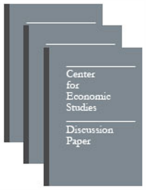Neighborhood Revitalization and Residential Sorting
Neighborhood Revitalization and Residential Sorting
Abstract
The HOPE VI Revitalization program sought to transform high-poverty neighborhoods into mixed-income communities through the demolition of public housing projects and the construction of new housing. We use longitudinal administrative data to investigate how the program affected both neighborhoods and individual residential outcomes. In line with the stated objectives, we find that the program reduced poverty rates in targeted neighborhoods and enabled subsidized renters to live in lower-poverty neighborhoods, on average. The primary beneficiaries were not the original neighborhood residents, most of whom moved away. Instead, subsidized renters who moved into the neighborhoods after an award experienced the largest reductions in neighborhood poverty. The program reduced the stock of public housing in targeted neighborhoods but expanded access to housing vouchers in other, lower-poverty neighborhoods. Spillover effects on the poverty rates of other neighborhoods were small and dispersed throughout the city. Our estimates imply that cities that revitalized half of their public housing stock reduced the average neighborhood poverty rate among all subsidized renters by 4.1 percentage points.
Others in Series
Working Paper
Working Paper
Working Paper




